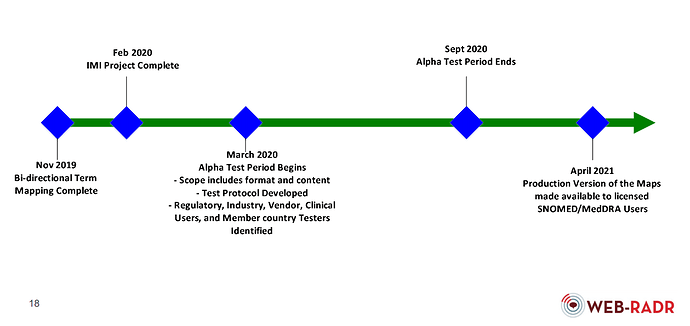The mappings mentioned above had been done internally, but not published yet since there is no agreement on how to handle the MedDRA/SNOMED hierarchies. So it’s not dropped, just keep waiting for its time.
BTW, @Christian_Reich can’t we simply add ‘Maps to’ links from MedDRA to SNOMED, but keep the structure as it is, at least for now?
MedDRA by itself is working on the SNOMED-MedDRA mappings, look.
